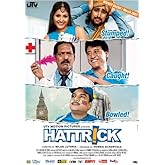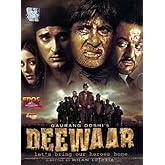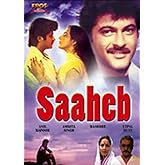Bollywood, the vibrant film industry of India, is known not just for its storytelling but also for its captivating visual aesthetics. Among the various elements that contribute to the allure of Bollywood films, movie posters hold a unique place. They serve as the first point of contact between the audience and the film, acting as a visual gateway that entices viewers to explore the narratives within. This article delves into the art of Bollywood movie posters, exploring their evolution, design elements, cultural significance, and the impact they have on marketing and audience engagement.
The Evolution of Bollywood Movie Posters

The history of Bollywood movie posters mirrors the evolution of Indian cinema itself, reflecting societal changes, technological advancements, and shifts in artistic expression.
- Early Days (1913-1950s): The first Bollywood posters were simple and hand-painted, often depicting the main actors in dramatic poses. These posters lacked the sophistication of modern designs and primarily aimed at informing audiences about the film’s title and cast.
- Golden Era (1960s-1980s): The introduction of vibrant colors and bold typography marked this era. Posters became more artistic, with influences from various art movements. Iconic films like “Sholay” and “Mother India” featured posters that became masterpieces in their own right.
- Modern Era (1990s-Present): With the advent of digital technology, the design of Bollywood posters has transformed dramatically. High-quality images, computer graphics, and innovative layouts are now standard. The poster for “Dilwale Dulhania Le Jayenge” (1995) is a prime example of this shift, combining both visual appeal and emotional engagement.
Key Design Elements of Bollywood Posters
The design of a Bollywood poster is a meticulous process that involves various elements meant to capture the essence of the film. Here are some key design elements:
- Color Palette: Bright and vibrant colors are often used to evoke emotions and attract attention. For instance, the use of red and gold in the poster for “Kabir Singh” signifies passion and intensity.
- Typography: The choice of fonts can convey the film’s genre and tone. For example, the playful typography in the poster for “Yeh Jawaani Hai Deewani” reflects its youthful and fun spirit.
- Imagery: Central images often feature the lead actors, sometimes in dramatic poses. The poster for “Padmaavat” showcases elaborate costumes and majestic settings, emphasizing its historical context.
- Taglines: Many Bollywood posters include catchy taglines that encapsulate the film’s theme, serving as a hook for potential viewers.
Cultural Significance of Bollywood Movie Posters

Bollywood movie posters are more than just marketing tools; they are cultural artifacts that reflect societal values, trends, and aspirations. Here are a few aspects of their cultural significance:
- Representation of Society: Posters often depict cultural norms, fashion trends, and social issues. For instance, the poster for “Queen” (2013) represents empowerment and self-discovery, resonating with the contemporary quest for women’s independence.
- Artistic Expression: Many posters feature artistic styles inspired by Indian art forms, such as Warli and Madhubani, blending traditional aesthetics with modern design.
- Historical Context: Over the decades, posters have mirrored the evolution of women’s roles in society. A comparison between posters from the 1960s and those from the 2000s shows a shift from stereotypical portrayals to more complex female characters.
Case Studies: Iconic Bollywood Movie Posters

To further illustrate the impact and artistry of Bollywood movie posters, let’s explore a few iconic examples:
1. Sholay (1975)

Often regarded as one of the greatest Indian films, the poster for “Sholay” features the lead characters in a dramatic tableau. The use of contrasting colors and bold typography creates a sense of urgency and action, perfectly capturing the essence of this classic.
2. Dilwale Dulhania Le Jayenge (1995)
This poster is a quintessential representation of the romantic genre in Bollywood. The imagery of the lead pair in a picturesque setting, combined with vibrant colors, evokes a sense of love and nostalgia. It played a significant role in the film becoming a cultural phenomenon.
3. Gully Boy (2019)

The poster for “Gully Boy” stands out with its minimalist design, focusing on the protagonist and his journey. The use of graffiti-style art connects with the film’s urban theme and youthful spirit, making it relatable to a contemporary audience.
The Marketing Impact of Movie Posters

Bollywood movie posters are crucial in marketing strategies, significantly influencing audience perceptions and box office performance. Here are some ways in which they impact marketing:
- First Impressions: A compelling poster can create immediate interest in a film. The visually striking poster for “Bajrangi Bhaijaan” (2015) played a vital role in its initial success, sparking curiosity and excitement among viewers.
- Merchandising Opportunities: Iconic posters often become collectibles, leading to merchandise sales. The poster for “3 Idiots” (2009) has been widely reproduced, contributing to the film’s brand value.
- Social Media Engagement: In the digital age, posters are shared widely across social media, creating buzz and anticipation. The poster for “Baahubali 2: The Conclusion” (2017) went viral, significantly impacting its box office success.
The art of Bollywood movie posters is a fascinating blend of creativity, marketing, and cultural representation. From their humble beginnings to their current status as iconic visual artifacts, these posters serve as a testament to the evolution of Indian cinema. They not only reflect the artistic trends of their time but also capture the societal changes and aspirations of audiences. As we navigate through the visual journey of Bollywood movie posters, it becomes clear that these artworks are integral to the film industry, influencing both audience engagement and cultural discourse. The vibrant colors, engaging designs, and evocative imagery of Bollywood posters will continue to enchant viewers and provide insights into the ever-evolving narrative of Indian cinema.